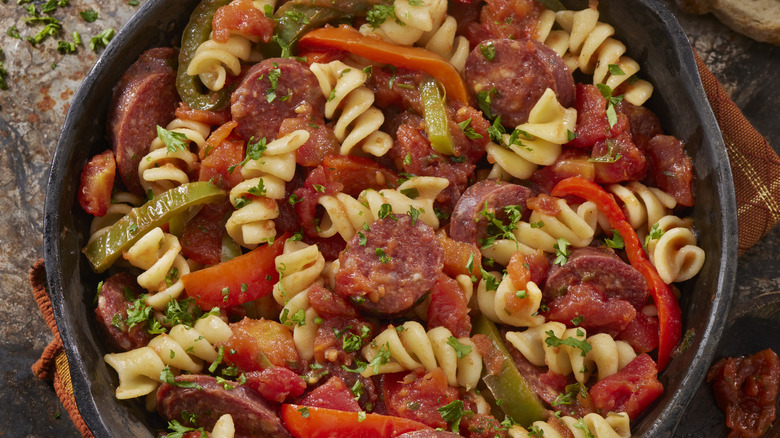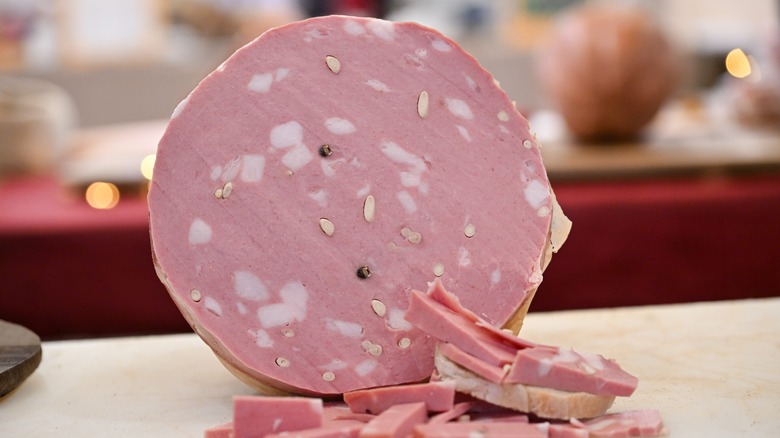Your Fool-Proof Guide To The 3 Common Types Of Natural Sausage Casings
Curing your own meats and stuffing your own sausages is one step you can take to get closer to a farm-to-table kitchen. Homemade sausage is typically composed of fresh ground meat and spices stuffed into a sausage casing. Natural sausage casings — hog, sheep, and beef are most common — provide a fresher, meatier flavor and tie off homemade sausage with a traditional look. They come from a section of the animal's small intestine called the submucosa, which is a section of the intestine that's high in collagen. The submucosa is optimal because its high levels of collagen maximize taste and prevent drying.
Making homemade sausages and home-cured meats will bring your meals to a new level — whether it's a crumbly sausage pasta or sausage and potatoes. Curing meats from scratch (as with the majority of these Italian deli meats) can be a long yet rewarding process and intensely amp up the flavors of a simple sandwich or charcuterie board. Natural sausage casings are ideal for curing meats at home because they tighten along with the meat as it dries which means it retains its shape.
Hog and sheep casings
Hog casings are typically thick and easy to work with. Their sturdiness allows them to encase a wide variety of sausages, so they're suitable for everything from fresh sausage to smoked sausage. Hog casings are tailored to specific sizes ranging from 30 to 44 millimeters. Any impurities or appendices are cut off when they're manufactured to ensure the end result will have the classic sausage look. Hog casings tend to be see-through and are used for thinner types of sausage.
Sheep casings are even thinner and more susceptible to tearing or piercing. Because of their easy-to-slice nature, they are most useful in pork sausages such as hot dogs, bratwursts, and frankfurters. These casings often appear translucent, hence why you can't see the sausage casing for most hot dogs and bratwursts. Of the natural casings readily available to consumers, sheep casings are the thinnest in diameter, ranging from 16 to 28 millimeters.
Beef casings are more complicated
Beef casings are where natural sausage casings begin to get a bit more convoluted. There are three types of beef casings: beef rounds, beef middles, and beef bung. Regardless of the type, beef casings tend to be preserved and sold in a salt cure. Before stuffing, rinse them thoroughly with cold water and finish them off with warm water. Ideally, you should let them soak in cold water overnight and rinse them with warm water before preparing the sausage.
Beef rounds have a natural U-shaped loop which holds up when stuffed — this is seen in ring-shaped sausages like kielbasa. Beef rounds are ideal for thin-to-average sausages as their diameter ranges from 35 to 46 millimeters. Beef middles are a bit thicker than beef rounds. Their sturdy yet malleable walls make them ideal for dry-cured sausages like salami. Their diameter ranges from 55 to 65 millimeters. Beef bung casings are known for their closed end (one end of every beef bung is capped). These have wide diameters, making them useful for thick bologna sausages or mortadella. Their diameter ranges from 89 to 127 millimeters.


